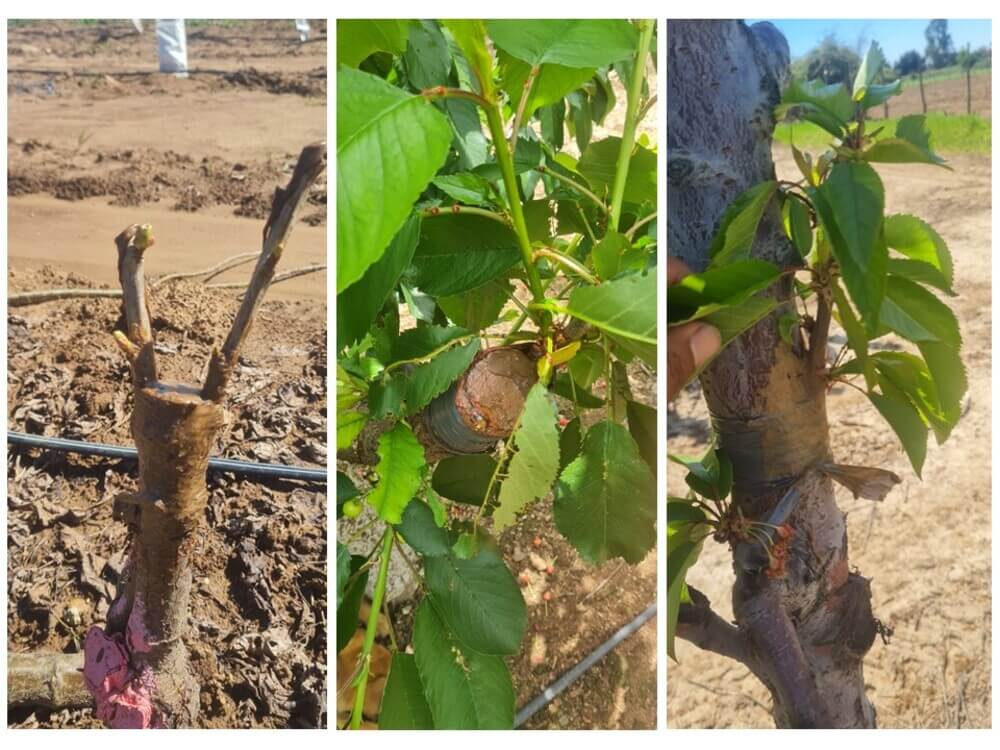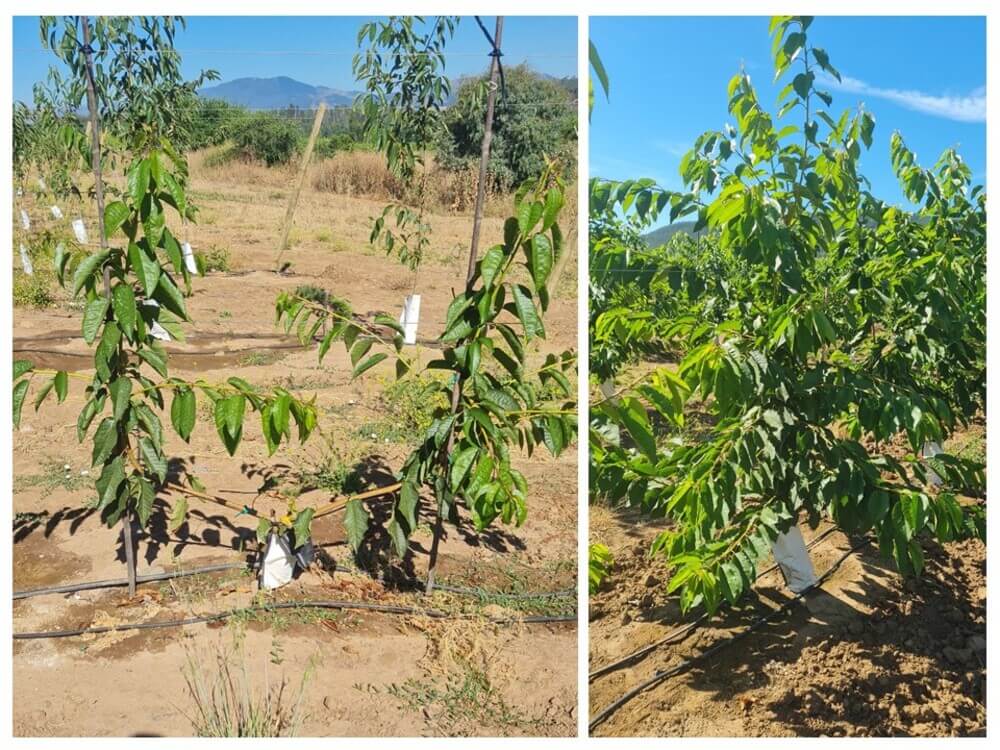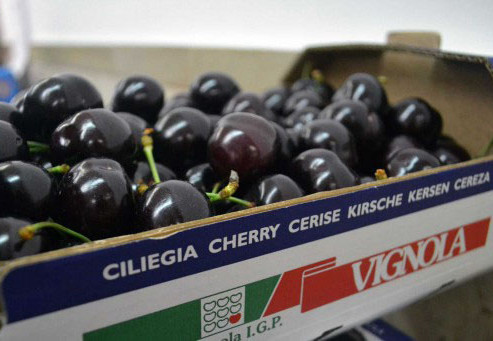
Stefano Lugli - SL Fruit Service
Cherry Times technical-scientific committee
In the establishment of new cherry orchards, the type and quality of the initial plant material is of decisive importance for the success of the cherry orchard. Currently, there are four main categories of plant material that can be used for planting cherry orchards: finished - grafted bare-root plants, bare-root plants grafted with dormant buds, rootstocks that will be grafted in place, and plants grafted in pots or potted varieties.
On the choice of planting material and the necessary cultivation practices to ensure the best initial development of cherry trees, Cherry Times interviewed Dr. Eduardo Madrid Pardo, Chilean agronomist consultant specialised in nursery techniques.
Nursery-grafted plants are nowadays mostly used to make new rootstocks, whereas, in the past, the practice of planting the rootstock and grafting it the following year was quite common. Is this practice still feasible today and what are the advantages/disadvantages of the two practices?
I think it was a mistake for consultants and producers in the past to propose keeping the rootstock for a year and then grafting it. Today, it has been proven that a month and a half after planting the wild tree is more than enough to then graft it, you save time and still achieve excellent results.
Personally, I do not believe there are any particular benefits in planting finished cherry plants to make a new cherry orchard: in addition to suffering stress on transplanting, in the nursery the plant's growth is forced into a certain competition for light and this often generates death in the most basal buds, the root must be shaped to carry for example 20 buds, where in the first year branching management cannot be done, which leads us to reduce the plant to the first 3 healthy buds.
In addition, the cost of buying a grafted plant is higher than buying the rootstock with the grafting material, even though nurseries today cannot sell rootstocks to producers unless the grafting promise is included.
I think that the only disadvantage one can have when grafting in the field is that if one pays grafters, they either do not guarantee final rooting or are not professionally trained, so grafting in the field can result in low yields, which leads to not being able to create a homogenous rootstock from the start. This means that the choice of the ideal solution must be discussed with experts in the case.

The classic treatises on fruit-growing teach us that for a good and lasting success of cherry orchards, it is first of all essential to properly set the shape of the tree through training pruning. This could take four to five years. Today, however, for economic reasons, we want to limit this unproductive period as much as possible, for example with dwarfing rootstocks, high-density plantings and tree training techniques that require minimal training pruning. How do you see it?
The important thing is to know what you want to achieve, you have to know the varieties well, how they bear fruit and whether they are easy or difficult to branch, take into account the type and quality of the rootstock. For example, raising a cherry tree on the Colt rootstock is not the same thing as how the plant should be formed on Gisela 12: in the first case, if we abuse the cuttings we lose some buds that can be productive, in the other case we can be more aggressive because the plants on Gisela 12 tend to be naturally more fertile.
Regarding varieties, in Chile we have introduced a new variety, Sweet Aryana, which is very easy to branch: we have grafted it in place on Colt and, to regulate the vigour that the rootstock gives the variety, we have created a double-axis training system. In this situation, the plants at the end of the first year of grafting have an average of 15 branches per tree, an optimal situation because it will allow us to raise the tree in the first two years and already in the third year to obtain a hypothesised production of 500 kg/ha until reaching 15 thousand kg/ha in the fifth year.
To summarise, therefore, we have to find the right way to manage the vigour of the rootstock on which the variety is grafted and take fertilisation and irrigation into consideration. Irrigation can be used as a growth regulator, since if our plants have a lot of vigour, when they are irrigated at 70%, it is proven that it is possible to contain them, obviously also taking into account not to abuse fertilisers, especially nitrogen-based ones.
There are many varieties that have an ascending habit and poor branching capacity, especially on vigorous rootstocks. With these varieties, you have managed to create new, excellently branched cherry trees. How did it work?
As I mentioned earlier, everything is related to crop management. Some producers think that fertilisation is the key, I would say that this is correct but fertiliser inputs must be made at the right time, neither too early nor too late: I think that in Chile the key time is in November. Also, very important is the care of the shoots, which we want to be lateral and which must be protected against high summer temperatures.
Another determining factor is knowing the management we have to do according to the variety/ rootstock combination: branching a variety like Kordia or Regina is not exactly the same as branching a variety like Santina. If Santina is planted on a fruiting rootstock such as Gisela 12, the plant immediately tends to differentiate into flowers, so we have to take care of the bud, then remove the flowers and make incisions with Promalin, looking for the right time to do the job, i.e. at bud tip green.
You should consider some growth regulators in winter output, to homogenise the work; if there is not too much of a difference and there is not healthy competition between the laterals, you should consider precise cuts and use products that are made to the recommended size and take the work as responsibly as possible.
For example, we have Santina plants on Colt grafted in the field that in their first year, with six rounds of engraving have an average of 25 laterals per tree.

It can happen that due to a wrong choice of pruning, cherry trees grow without the necessary permanent basal branches. You propose the technique of side grafting directly onto the trunk or main branches. Can you explain this technique?
My speciality is grafting, and of course I recommend side split or side scion grafting. There are agronomists who recommend bud grafting, but this is bad management, as the trunk ends up 'eating' the buds.
Scion grafting is much more effective, but the yields when grafting an adult plant compared to when grafting a rootstock in the field are quite different: the percentages drop and vary from 75-80%, in the first case, to 99%, I can assure you, with rootstock grafting in the field.
For example, this year we did several trials in our field. We did three types of grafting, auger (44% success rate), side scion (53% success rate) and side split (84% success rate).
Images: Eduardo Madrid Pardo
Cherry Times - All rights reserved













